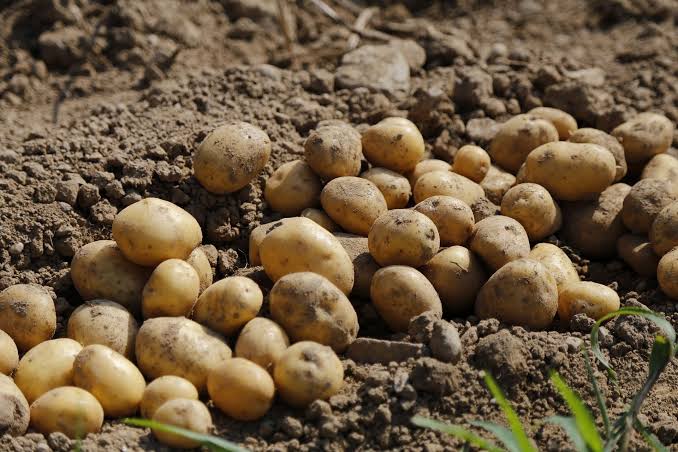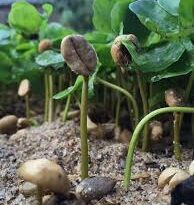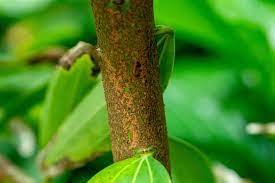Potato Virus Y: Description, Damages Caused, Control and Preventive Measures
Potato virus Y (PVY), scientifically known as Potyvirus Y, is a harmful pathogen that affects potatoes. This virus primarily spreads through infected seed potatoes and aphid vectors, posing a significant threat to potato crops worldwide. PVY belongs to the Potyvirus genus, and its impact on the potato industry is substantial.
PVY manifests in various forms, with strains that can induce mild to severe symptoms in infected plants. Common symptoms include mosaic patterns on leaves, stunted growth, and distortion of foliage. These visible signs often lead to reduced yields and lower quality potatoes, affecting both farmers and consumers.
Aphids play a crucial role in transmitting PVY. These tiny insects act as vectors, carrying the virus from infected plants to healthy ones as they feed. Once a potato plant is infected, the virus can spread rapidly within the crop, making control and containment challenging for farmers.
Crop management practices, such as using certified virus-free seed potatoes and implementing strict aphid control measures, are essential to mitigate the impact of PVY. Crop rotation and maintaining proper hygiene in potato fields also contribute to reducing the risk of virus transmission.
Scientists and researchers continually work towards developing resistant potato varieties to combat PVY. Breeding programs focus on creating potatoes with genetic traits that make them less susceptible to the virus, providing a sustainable solution for farmers.
Despite efforts to control and prevent PVY, its global prevalence remains a concern. The economic consequences of PVY outbreaks can be severe, affecting potato production and supply chains. Collaborative initiatives between agricultural organizations, researchers, and farmers are crucial to developing effective strategies for PVY management.
The virus spreads through infected seed potatoes and aphid vectors, making it challenging to control. Ongoing research and collaborative efforts aim to develop resistant potato varieties and implement effective management practices to safeguard potato crops against PVY.
Read Also: What Do Honey Bees Look Like
Plants Affected by Potato Virus Y (Potyvirus Y)

Potato virus Y (PVY) affects a wide range of plant species, but its primary impact is observed in potatoes (Solanum tuberosum). This virus has the potential to infect other plants within the Solanaceae family, causing various symptoms and negatively affecting crop yields.
1. Tomatoes (Solanum lycopersicum): Tomatoes are susceptible to PVY, showing symptoms similar to those observed in potatoes. Mosaic patterns on leaves, stunted growth, and reduced fruit quality can occur in tomato plants infected with PVY.
2. Peppers (Capsicum spp.): Pepper plants, belonging to the same Solanaceae family, are also vulnerable to PVY infection. Symptoms may include leaf mosaic, leaf curling, and overall reduced plant vigor.
3. Eggplants (Solanum melongena): Eggplants, being part of the Solanaceae family, can be affected by PVY. Infected eggplants may exhibit mosaic patterns on leaves, leading to a decline in fruit quality and yield.
4. Tobacco (Nicotiana spp.): Certain varieties of tobacco plants can serve as hosts for PVY. The virus can cause mosaic symptoms on tobacco leaves, impacting the quality of the plant.
5. Petunias (Petunia spp.): Ornamental plants like petunias can also be affected by PVY. Infected petunias may display mosaic patterns on leaves, affecting their aesthetic appeal.
It’s essential to note that while PVY primarily targets plants within the Solanaceae family, the severity of symptoms can vary among different species. The virus’s ability to infect various plants underscores the importance of implementing proper disease management strategies to protect both food and ornamental crops from the detrimental effects of Potato virus Y.
Damages Caused by Potato Virus Y

Potato virus Y (PVY) inflicts significant damages on potato and other susceptible crops, impacting both quality and yield. The consequences of PVY infections include:
1. Reduced Yield: PVY can lead to a considerable reduction in potato yields. Infected plants may produce smaller tubers, and in severe cases, the entire crop may be compromised. This has direct economic implications for farmers, affecting their income and livelihoods.
2. Quality Degradation: The virus affects the quality of potato tubers by causing symptoms such as mosaic patterns, necrosis, and distortion of the foliage. These visual defects make the potatoes less marketable, leading to financial losses for farmers and affecting consumer satisfaction.
3. Stunted Growth: PVY-infected plants often experience stunted growth, resulting in diminished plant vigor. This can further contribute to reduced yields as the affected plants are unable to reach their full potential in terms of size and productivity.
4. Transmission to Other Crops: As a highly contagious virus, PVY can spread to other crops, especially those within the Solanaceae family, such as tomatoes, peppers, and eggplants. This not only amplifies the economic impact but also poses challenges for crop rotation strategies and overall farm management.
5. Increased Susceptibility to Other Pathogens: PVY weakens the plant’s immune system, making it more susceptible to other diseases and pests. This secondary vulnerability can lead to additional challenges in crop protection and management.
6. Aphid-Related Costs: Since PVY is primarily transmitted by aphids, farmers may incur additional costs in implementing aphid control measures. These costs include the purchase of insecticides and the labor involved in applying these control methods.
7. Market Access Issues: PVY-infected crops may face restrictions in domestic and international markets due to quality concerns. Export restrictions or rejection of shipments can have severe consequences for farmers and the overall potato industry.
The damages caused by Potato virus Y underscore the importance of preventive measures, including the use of certified virus-free seed potatoes, implementing strict aphid control strategies, and ongoing research for developing resistant potato varieties. Addressing the impact of PVY is crucial for ensuring the sustainability of potato cultivation and maintaining a stable food supply.
Read Also: What Do Bees Use Honey For
Control and Preventive Measures

Controlling and preventing the spread of Potato virus Y (PVY) involves a combination of practices aimed at reducing the risk of infection and managing the virus’s impact. Here are some key control and preventive measures:
1. Use Certified Virus-Free Seed Potatoes: Planting certified virus-free seed potatoes is a fundamental preventive measure. It helps ensure that the initial planting material is free from PVY and other viruses, reducing the risk of introducing the virus into the crop.
2. Aphid Control: Since aphids are the primary vectors of PVY, implementing effective aphid control measures is crucial. This may include the use of insecticides, the promotion of natural predators, and the adoption of physical barriers like row covers to prevent aphid infestations.
3. Crop Rotation: Practicing crop rotation can help break the virus’s life cycle and reduce its persistence in the soil. Avoid planting potatoes or other susceptible crops in the same field consecutively to minimize the risk of PVY buildup.
4. Rogueing Infected Plants: Promptly identifying and removing PVY-infected plants from the field, a practice known as rogueing, helps prevent the virus from spreading within the crop. This manual removal is essential to control localized outbreaks and limit further transmission.
5. Sanitation Measures: Maintaining good hygiene in and around potato fields is critical. This includes cleaning equipment, tools, and storage facilities to prevent the spread of the virus. Proper disposal of infected plant material is also essential to reduce the virus’s presence.
6. Resistant Varieties: Planting potato varieties with genetic resistance to PVY is an effective long-term strategy. Ongoing research aims to develop and promote varieties that can withstand PVY infections, providing sustainable solutions for farmers.
7. Integrated Pest Management (IPM): Adopting an integrated approach to pest management involves combining various strategies to control aphids and prevent PVY spread. This may include biological control methods, cultural practices, and the judicious use of chemical interventions.
8. Early Detection and Diagnosis: Regular monitoring of crops for symptoms of PVY is crucial. Early detection allows for swift action, such as rogueing infected plants, to minimize the virus’s impact on the entire crop.
9. Public Awareness and Education: Educating farmers, agricultural professionals, and the wider community about PVY, its symptoms, and preventive measures is vital. Increasing awareness helps ensure the adoption of best practices and facilitates early intervention.
By implementing a comprehensive and integrated approach to control and prevention, farmers can minimize the impact of Potato virus Y on potato crops and contribute to the overall health and sustainability of agricultural systems.
Frequently Asked Questions (FAQs) About Potato Virus Y (Potyvirus Y)
1. Q: What is Potato virus Y (PVY)?
A: Potato virus Y, or PVY, is a harmful pathogen affecting potatoes and other plants in the Solanaceae family. It causes symptoms such as mosaic patterns on leaves and can lead to reduced yields and poor crop quality.
2. Q: How is PVY transmitted?
A: PVY is primarily transmitted by aphids, small insects that feed on plant sap. Infected seed potatoes can also serve as a source of the virus.
3. Q: What are the symptoms of PVY in potatoes?
A: Symptoms in potatoes include mosaic patterns on leaves, stunted growth, and distortion of foliage. These visible signs may vary in severity depending on the strain of the virus.
4. Q: Can PVY infect other crops besides potatoes?
A: Yes, PVY can infect other plants within the Solanaceae family, including tomatoes, peppers, eggplants, tobacco, and ornamental plants like petunias.
5. Q: How can farmers prevent PVY outbreaks?
A: Preventive measures include using certified virus-free seed potatoes, implementing aphid control measures, practicing crop rotation, and maintaining good hygiene in and around potato fields.
6. Q: Are there resistant potato varieties to PVY?
A: Ongoing research aims to develop potato varieties with genetic resistance to PVY. Planting resistant varieties is a sustainable long-term strategy for managing the virus.
7. Q: What is rogueing, and why is it important in PVY control?
A: Rogueing involves identifying and removing PVY-infected plants from the field. This manual removal helps prevent the spread of the virus within the crop.
8. Q: Can PVY affect the quality of potatoes?
A: Yes, PVY can significantly impact the quality of potatoes. Infected tubers may exhibit visual defects, leading to reduced marketability.
9. Q: How can farmers manage aphids, the primary vectors of PVY?
A: Aphid control measures include the use of insecticides, promoting natural predators, and employing physical barriers like row covers to prevent aphid infestations.
10. Q: What are the economic consequences of PVY outbreaks?
A: PVY outbreaks can result in reduced potato yields, lower quality tubers, and market access issues. The economic impact extends to farmers and the overall potato industry.
Read Also: 5 Strategies for Lifetime Fitness









